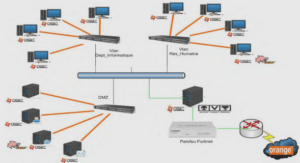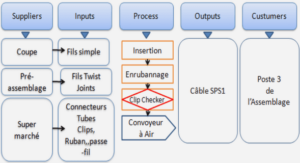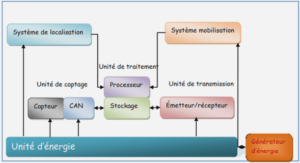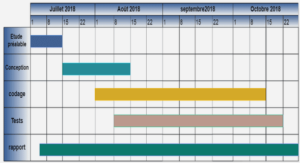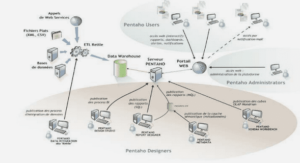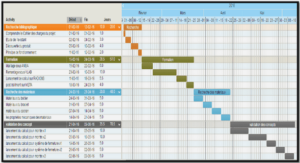Etiology and diversity of RSR and diversity of the causal agent
Vanilla
Vanilla (Vanilla planifolia G. Jackson) belonging to the family Orchidaceae is one of the most expensive spice crops. The beans of this orchid on processing yield “vanilla”, which has a great demand in the flavoring industry. Vanilla planifolia, being the only source of natural vanillin, makes it an inevitable part in food industries owing to its unique and pleasant aroma.
These features make vanilla the most popular and widely used spice in global market. The major consumers of vanilla beans are currently the developed countries, with the United States, Germany and France absorbing more than 80 % of the world exports (Anilkumar,2004)
Vanilla is native to Southeast Mexico and possibly other parts of Central America. It is now cultivated in various parts of the tropics, between the 27th north and south parallels.
Presently vanilla cultivation provides economy and labor in countries such as Madagascar, Indonesia, Mexico, Reunion Islands, India, Comoros Islands, Uganda, Java, Costa Rica and French Polynesia .The genus Vanilla consists of about 110 species of which only two species are commercially exploited and cultivated, namely V. planifolia and V. X tahitensis J.W. Moore. Due to its superior vanillin content, 95 percent of the vanilla bean production is contributed by the V. planifolia species (Lubinsky et al., 2008).
Fusarium oxysporum
Fusarium is a large genus of ascomycete filamentous fungi widely distributed in soil and in association with root rhizosphere. This fungus belongs to the sub division of Fungi Imperfecti with a worldwide distribution. The majorities of the Fusarium species are harmless saprophytes and are relatively abundant members of the soil microbial community. Some species of Fusarium produce mycotoxins in cereal crops that severely affect human and animal health if they enter the food chain. The ability of this particular fungus to cause disease in both plants and humans has encouraged significant research on this genus. The genus also includes some economically important plant pathogens responsible for diseases in many plant hosts (Baayen, 2000, O’Donnell et al., 2009a).
F. oxysporum is an important species complex within the genus Fusarium and the causal agent of vascular wilt in various agronomical and horticultural important crops like tomato, crucifers, cotton, banana and watermelons (Szczechura et al., 2013, Bosland & Williams, 1987, Vakalounakis, 1996b). This species occupies the 5th position among the top 10 fungal pathogens based on its scientific and economic importance (Dean et al., 2012). The host range of F. oxysporum is broad consisting of plants, animals, humans and arthropods (Nelson, 1994).
Plant pathogen interactions
Plant-pathogen interaction can be broadly classified as beneficial, detrimental or neutral (Schenk et al., 2012). Plant pathogen interactions have been studied for several years in order to understand how the plant and pathogen recognize each other and differentiate to establish either a compatible or an incompatible relationship (Mehta et al., 2008). The pathogenic fungus should overcome different plant defense responses at different stages of penetration and colonization. During the final stage of infection, the fungus secretes lytic enzymes and toxins that lead to disease symptoms including necrosis, chlorosis and wilting. As soon as the plant receives signals from the pathogen, various defense mechanisms such as plant cell wall thickening, papilla deposition, apoplast acidification, signal transduction and transcription of defense genes are initiated (Mehta et al., 2008). Only the successful pathogen can surpass this basal defense mechanism of the plant and develop disease in the host.
Plants have developed constitutive (barriers such as cell wall, waxy cuticles and bark) and inducible defenses (production of toxins and pathogen degrading enzymes) in order to protect themselves from pathogens (Freeman & Beattie, 2008). Beside the natural physical barriers, plants also possess an immune response against the pathogen during the attack. Once recognizing the signals from the pathogen (PAMP, MAMP), the plant elicits a series of cellular and physiological responses (Wu et al., 2014)
Control of RSR of vanilla
Fusarium diseases are very difficult to control because of the airborne. There is also a higher chance for the pathogen to be carried on to the uninfected plants through various medium. Because of the considerable yield and economic losses, several measures have been attempted to control Fusarium diseases. Cultural technique, crop rotation, chemical control and biological control are mostly employed in controlling Fusarium diseases (Katan, 2000, Rehman et al., 2014). Fumigation with methyl bromide/ chloropicrin has been attempted in controlling the disease in greenhouses (Dantoff et al., 1995). Chemical control of Fusarium diseases using various fungicides including Benomyl, Ridomil, copper oxychloride, Mancozeb, captafol, thiram and imazalil was employed in major crops (Amini & Sidovich, 2010, Hannan et al., 2014). The most cost efficient and environmental safe method of disease control is the use of resistant cultivars, which is subjected to availability.
The use of non-pathogenic strains of F. oxysporum has been used in many crops in controlling Fusarium diseases (Belgrove et al., 2011, Larkin et al., 1996, Lemenceau & Alabouvette, 1991, Olivain et al., 2006, Silva & Bettiol, 2005). The non-pathogenic strains are capable of reducing the chlamydospore germination of the pathogenic strain and also compete for infection sites on roots, thereby triggering plant defense reactions (Fravel et al., 2003a). Bio control methods using antagonists like Pseudomonas fluorescens, Trichoderma viride, Bacillus subtilis were also widely used in controlling the disease (Chen et al., 1995, Dantoff et al., 1995, Webb et al., 2015). The biocontrol of Fusarium has been considered to be a potential strategy in recent years, because of the chemical control measures resulting in the accumulation of harmful chemical residues in the environment.
Agronomical management
Fusarium oxysporum is particularly difficult to eliminate from soil by rotation or long fallow. In vanilla plantations, different phytosanitary measures are followed in order to control and prevent the spread of diseases (Fouche & Jouve, 1999). Removal and disposal (phytosanitation) of infected plants are done in priority to prevent the spread of diseases (Anandaraj et al., 2005). The use of good planting material and input of compost in regular intervals also helps in controlling the disease. Other control measures such as mulching were used to control Fusarium disease, especially with clove leaves (Tombe et al., 1992).
Chemical control
The use of various fungicides and chemicals was also employed in controlling the stem and root rot disease of vanilla. The fungicides containing Mancozeb and Carbendazime have been used in Bali and Indonesia against Fusarium stem rot (Tombe & Sitepu, 1986).
Fungicides containing Phosetyl-Aluminium, Carbendazime, Prochloraze are also included in the list of recommended fungicides against RSR (Fouche & Jouve, 1999, Anandaraj et al., 2005). However there are no fungicides reported which can effectively tackle the RSR. The practice of using fungicides is declining due to its hazardous nature, restrictions from government agencies and their limited efficiency.
The use of plant extracts was also reported to be used in controlling Fusarium diseases in vanilla. In-vitro experiments conducted in Bali (Suprapta & Khalimi, 2009), reported the efficiency of extracts from Eugenia aromatica and Piper betel in inhibiting the growth of F. oxysporum f. sp. vanillae. Essential oils such as cinnamon, thyme and clove oils were also claimed to be effective in inhibiting pathogen growth in-vitro. However the use of fungicides and biocontrol agents are not effective in field experiments.
Biocontrol agents
Biological control agents are reported to be used as control measure in vanilla plantations in few countries. Biocontrol agents could be considered as an alternative for the chemical fungicides considering the concerns for environmental protection and cost. Various biological agents like T. harzianum, T. virens, P. fluorescens, P. putida, Paecilomyces sp and B. subtilis were tested in in-vitro, pot and field conditions and were reported to be effective against Fusarium disease (Bhai et al., 2009, Naik et al., 2010, Sandheep et al., 2012, Sandheep et al., 2014). Combined treatment of T. harzianum and P. fluorescens through soil mixing also enhanced the vegetative growth of vanilla apart from the primary function of disease control (Sandheep et al., 2012). The use of non-pathogenic F. oxysporum was also proposed in controlling the RSR in Indonesia (Tombe et al., 1992, He, 2007)
Genetic resistance
Host plant resistance has been identified as the primary strategy for long-term management of RSR. Indeed some sources of resistance to Fusarium are reported in related species. The known RSR resistant species include V. pompona, V. phaeantha, V. barbellata, V. aphylla and V. andamanica (Knudson, 1950, Theis & Jimenez, 1957a, Divakaran et al., 2006b). The microscopic observation of wounded cells of V. phaeantha displayed the secretion of idioblast in response to the pathogen (Alconero, 1968b). The unpublished results from Madagascar also describe the resistance in vanilla species such as V. pompona and V. phaeantha. (Tonnier, 1960). Vanilla species can be relatively easily hybridized and a few hybrids showing tolerance to Fusarium have been reported (Knudson, 1950, Delassus, 1963., Nany, 1996).
However the Fusarium resistant species usually possess poor aromatic features.
|
Table des matières
CHAPTER I INTRODUCTION
I Vanilla
I-1 History of vanilla cultivation
I-2 Economic importance of vanilla
I-3 Taxonomy of Vanilla
I-4 Botany of Vanilla
I-5 Histology of vanilla
I-6 Agronomy of Vanilla
I-7 Diseases of vanilla
I-8 Root and stem rot of Vanilla
II Fusarium oxysporum
II-1 Taxonomy of Fusarium oxysporum
II-2 Morphological characteristics
II-3 Diversity of Fusarium
II-4 Pathogenicity of Fusarium oxysporum
II-5 Infection pattern
II-6 Fungal genes responsible for pathogenicity
III Plant pathogen interactions
III-1 Plant recognition
III-2 R gene mediated resistance
IV Control of RSR of vanilla
IV-1 Agronomical management
IV-2 Chemical control
IV-3 Biocontrol agents
IV-4 Genetic resistance
V Aim and Objectives of the study
CHAPTER II Etiology and diversity of RSR and diversity of the causal agent
I Introduction
II Materials and Methods
II-1 Sample collection
II-2 Isolation, purification and morphological identification of Fusarium isolates
II-3 DNA extraction
II-4 PCR amplification and DNA sequencing
II-5 Pathogenicity tests
II-6 Histological observations
II-7 Data analysis
III Results
III-1 Field survey and symptomatology
III-2 Recovery of fungal isolates
III-3 Molecular diversity analysis
III-4 Morphological identification
III-5 Pathogenicity assessment
III-6 Histopathological observations
IV Discussion
V Acknowledgements
VI References
VII Figures captions and Tables
CHAPTER III Differential responses of vanilla accessions to root and stem rot
I Introduction
II Materials and Methods
II-1 Fungal isolates and vanilla genotypes
II-2 Evaluation of RSR resistance in field conditions
II-3 In-vitro plant inoculation and assay
II-4 Wide field microscopy
II-5 Multi-photon confocal microscopic analysis
II-6 Emissions spectral analysis
II-7 Data analysis
III Results
III-1 Field evaluation of accessions
III-2 In-vitro germplasm screening for resistance to Forv
III-3 Correlations between field and in-vitro evaluations of RSR resistance
III-4 Colonization of the root surface
III-5 Colonization in the root tissues
III-6 Anatomical differences between susceptible and resistant cultivars
IV Discussion
IV-1 Forv infection and colonization pattern
IV-2 Cellular and histochemical mechanisms in Forv resistance
IV-3 Screening for resistance to Forv in Vanilla
V Acknowledgements
VI Bibliography
VII Tables
VIII Figure captions
CHAPTER IV Differential expression study
I Introduction
II Materials and methods
II-1 Plant material and pathogen inoculation
II-2 RNA extraction, library preparation and sequencing
II-3 Transcriptome assembly
II-4 Classifying the sources of transcripts
II-5 Gene expression and Functional annotation
III Results
III-1 Plant material and pathogen inoculation
III-2 RNA extraction, library preparation and sequencing
III-3 Transcriptome assembly
III-4 Classifying the sources of transcripts
III-5 Gene expression and functional annotation
III-6 Role of Differentially expressed genes
IV Conclusion
V Figure captions and tables
CHAPTER V GENERAL DISCUSSION
I Etiology of RSR
II Infection pattern and defense responses in vanilla root
III Developping resistance to Forv
IV Control of RSR
![]() Télécharger le rapport complet
Télécharger le rapport complet

